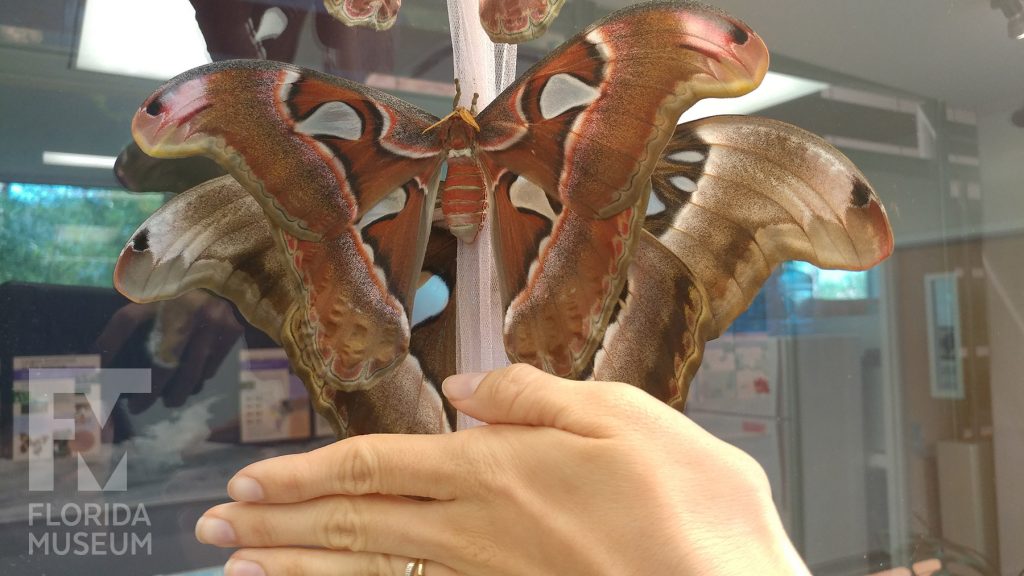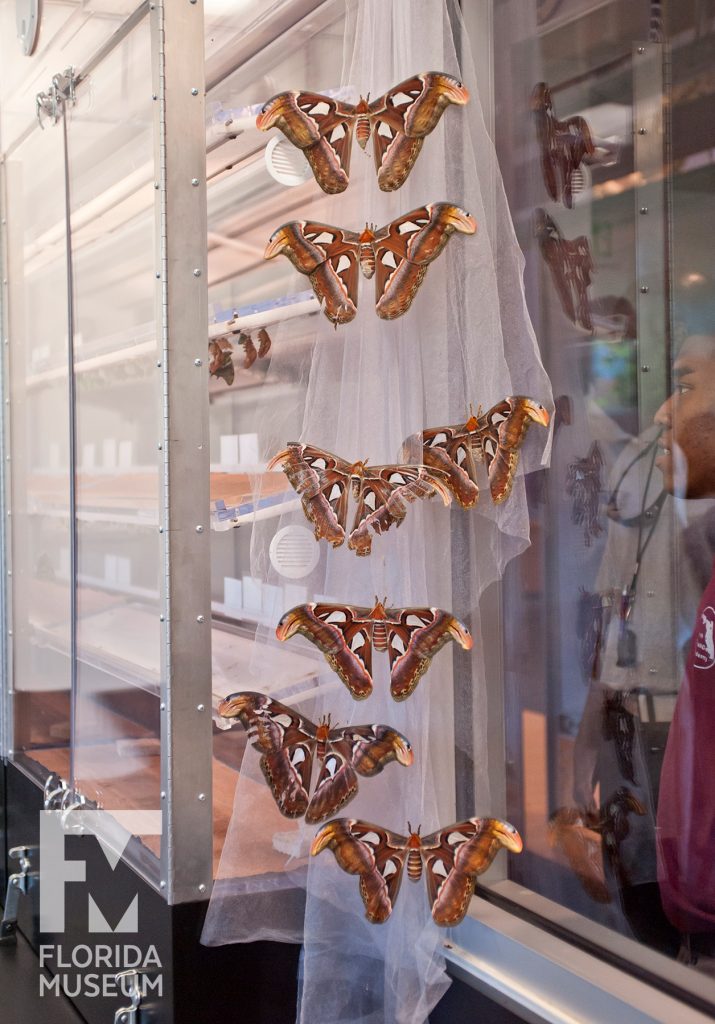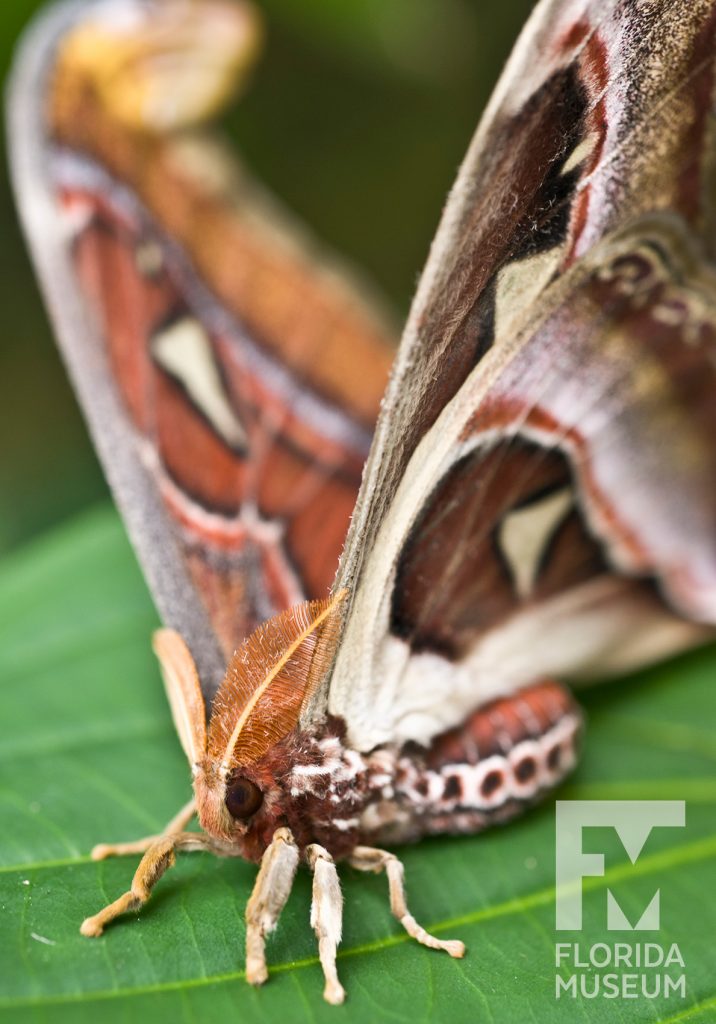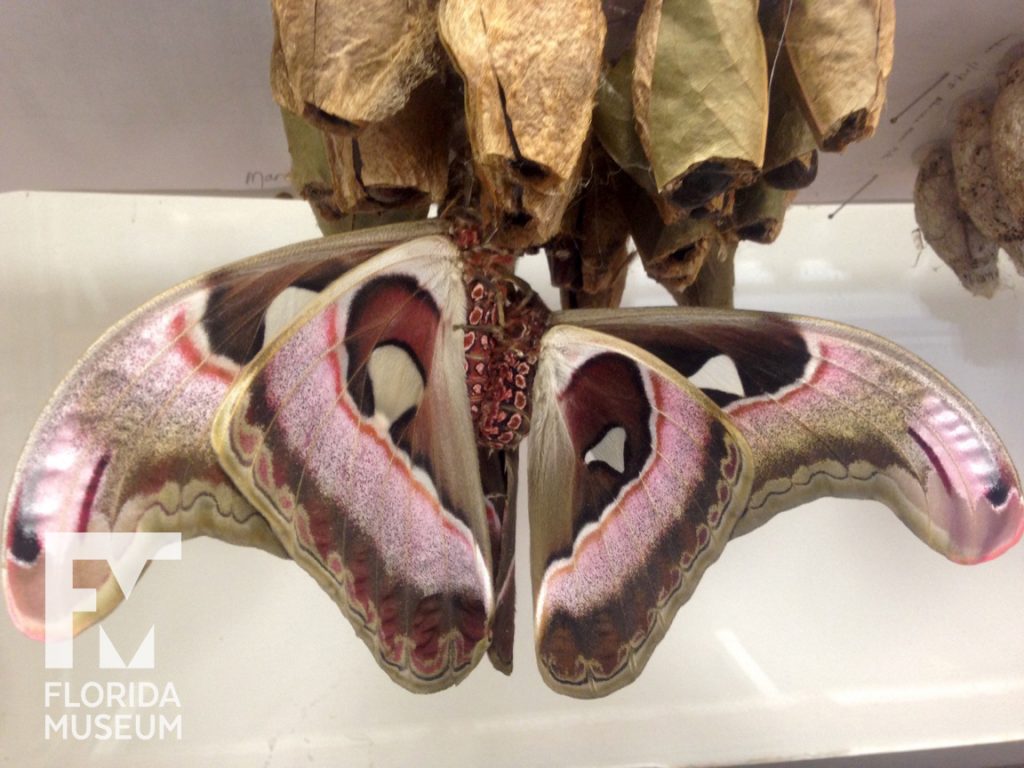Swing by the Butterfly Rearing Lab and you’ll likely see gigantic moths hanging in the window. They are real, but these moths sit so still during the day that they’re often disregarded as a string of decorative garland.
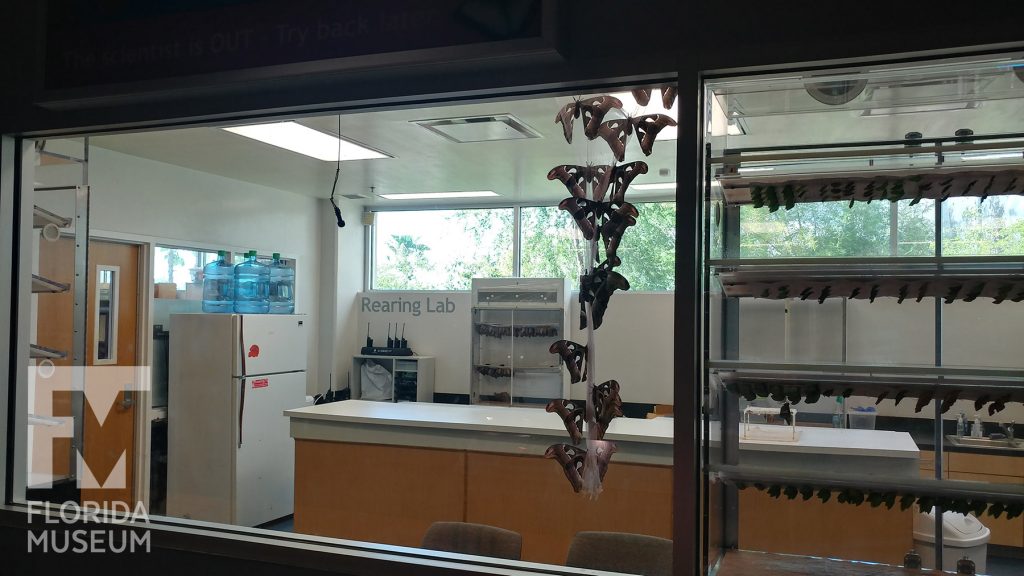
They’re alive. We promise.
Most moths are nocturnal, so they rest during the day and fly at night. We get a variety of moths in the lab, but the Atlas moths are by far our most commonly displayed species.
Super cool Atlas moth facts:
- They’re considered one of the largest moths in the world. Female wingspans can reach up to 12 inches across.
- They only live for about a week. An adult’s life goal is to find a mate and lay eggs. With only a few precious days to do this, there’s not much time for anything else. Which brings us to number 3…
- Adults don’t eat. In fact, they don’t even have mouth parts! As caterpillars, they eat voraciously to live off of their fat reserves as adults.
So why are they hanging in the window?
The moths in the window are all female. Female Atlas moths are not very picky about where they lay their eggs, so only male Atlases are released into the Butterfly Rainforest (females remain in the lab). If females did lay eggs in the exhibit, we’d have little Atlas caterpillars devouring our beautiful plants. In addition, the United States Department of Agriculture (USDA) does not permit us to breed exotic butterflies or moths at the museum.
Note: Egg laying works differently for most butterflies. Females will only lay eggs on their particular “host” plant. We don’t have any host plants in the Rainforest, so males and females can co-mingle without us having to worry about them laying eggs.
